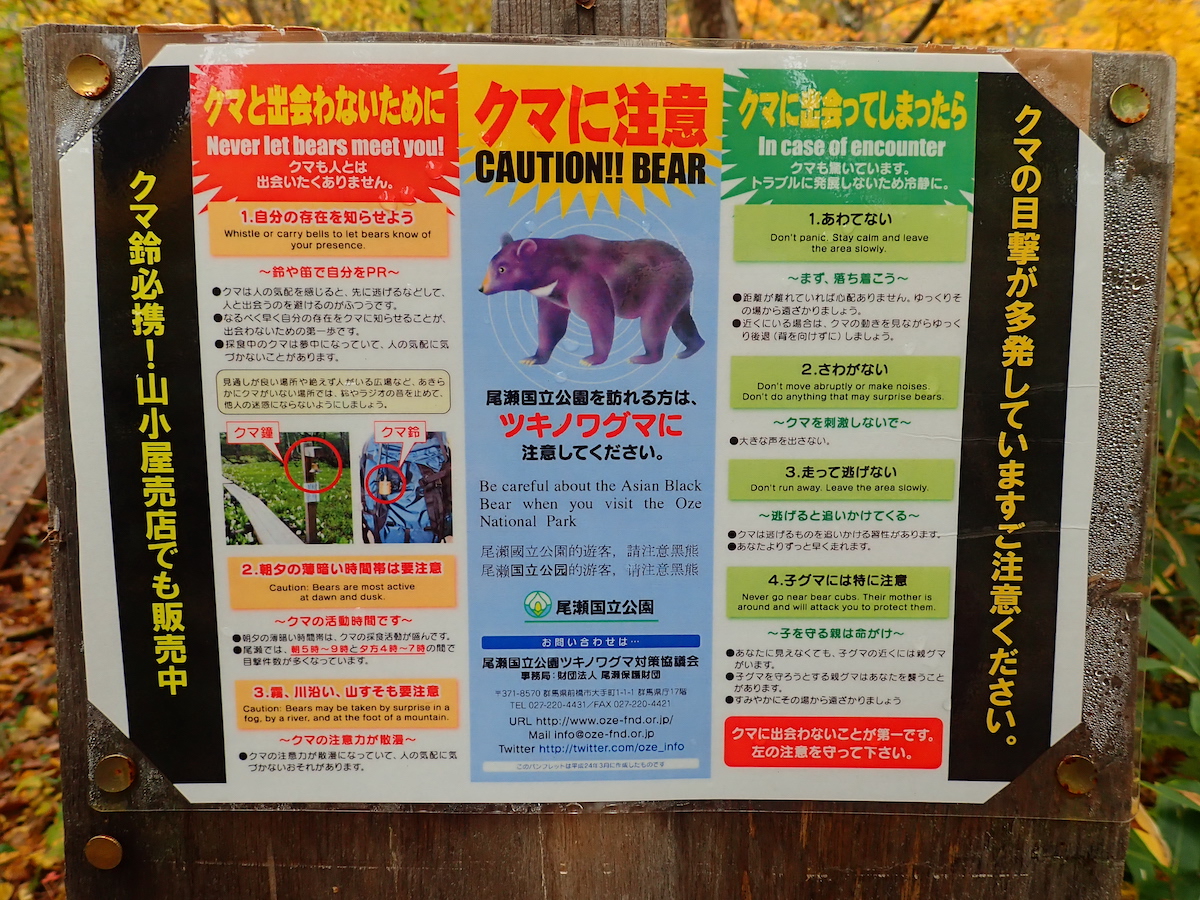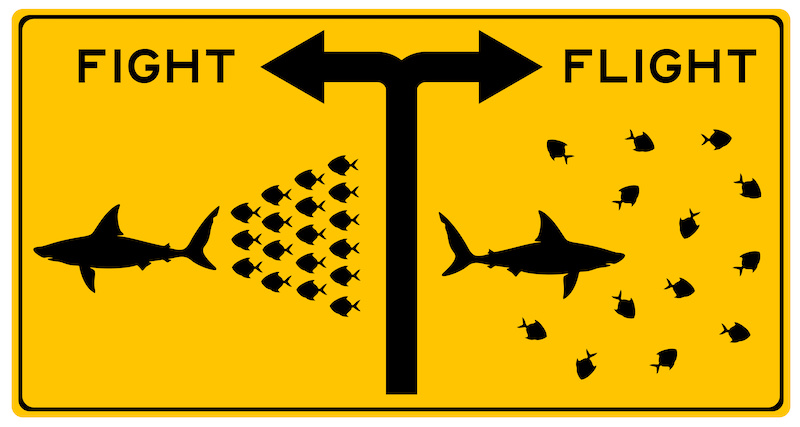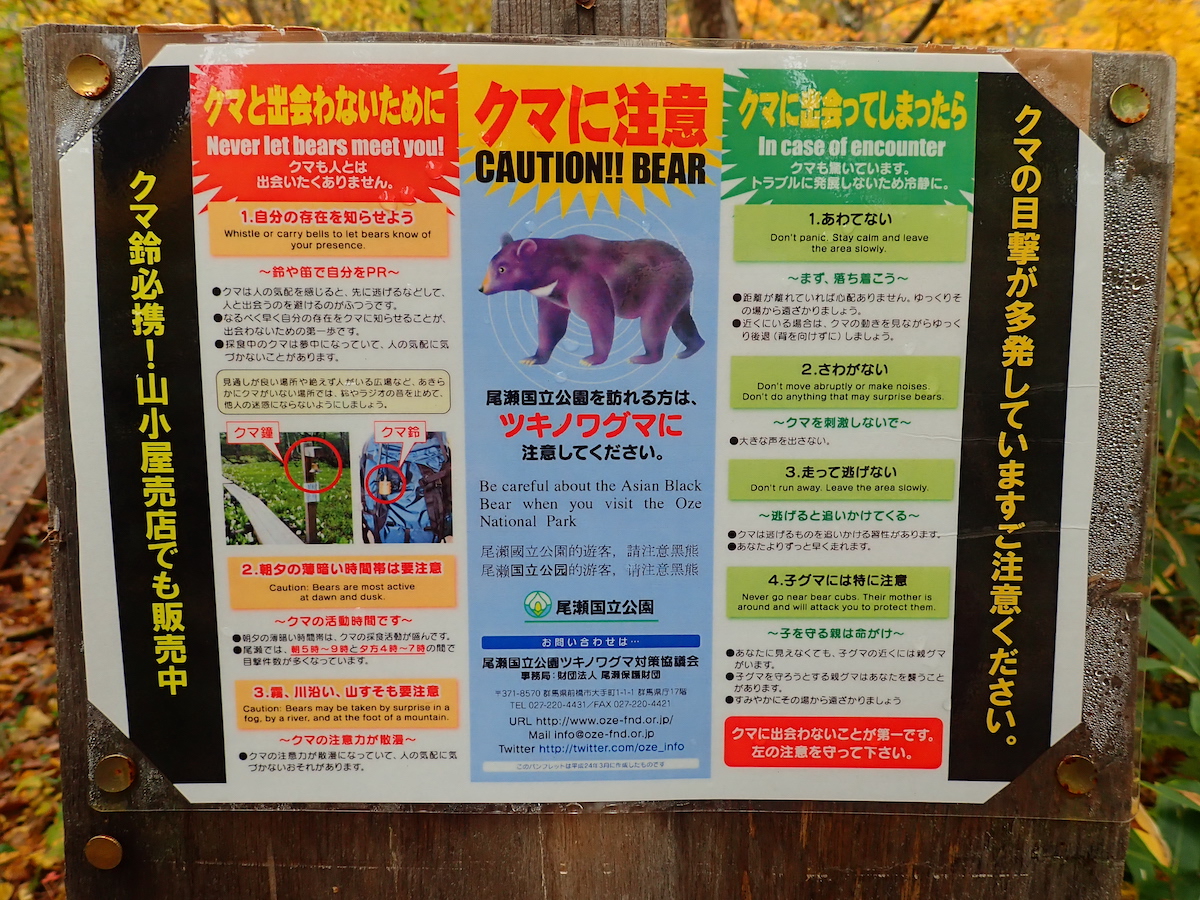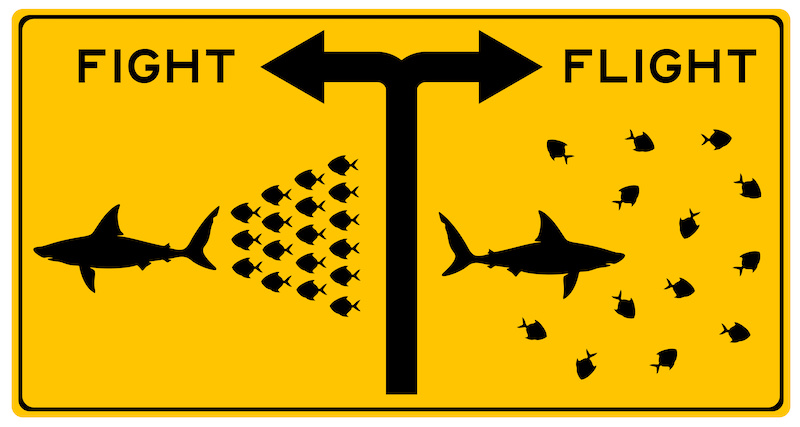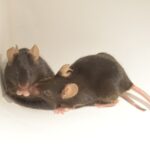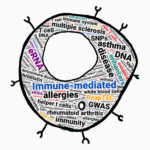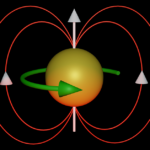The long awaited sequel to A researcher’s journey: from surfing to studying pain is here! When we last heard our hero, he had just revealed that his interest in studying pain in the brain outweighed his interest in becoming a doctor. So, Josh chose to go to graduate school to study neuroscience, rather than apply to medical school. So grab your favorite cat, sit back, chillax, and read on.
From pain to emotional memory
Takeuchi: Your current research is on emotions and memory. How did you come to shift your research focus from studying pain?
Johansen: Actually, it wasn’t much of a shift. I began studying emotional memory because it was an extension of my initial pain research on trying to understand how unpleasant or aversive experiences change behavior. The study of emotion had identified a specific brain region called the amygdala, which is important for storing emotional memories. For example, imagine you hear the sound of twigs breaking in the woods before a bear comes charging at you. If you subsequently hear a rustling in the underbrush on your next hike you will have an emotional memory that mobilizes survival mechanisms such as increased heart rate and blood pressure and defensive behaviors like flight or fight. This type of associative emotional memory is also produced when we have painful experiences. So I could take my initial questions on how pain leads to learning and changes in behavior and study them in a brain region, the amygdala, which I knew stored these types of memories. I could try to figure out how the primary aversive experience, pain from the attack of a wild animal for example, triggers biological changes in the amygdala to produce emotional memories.
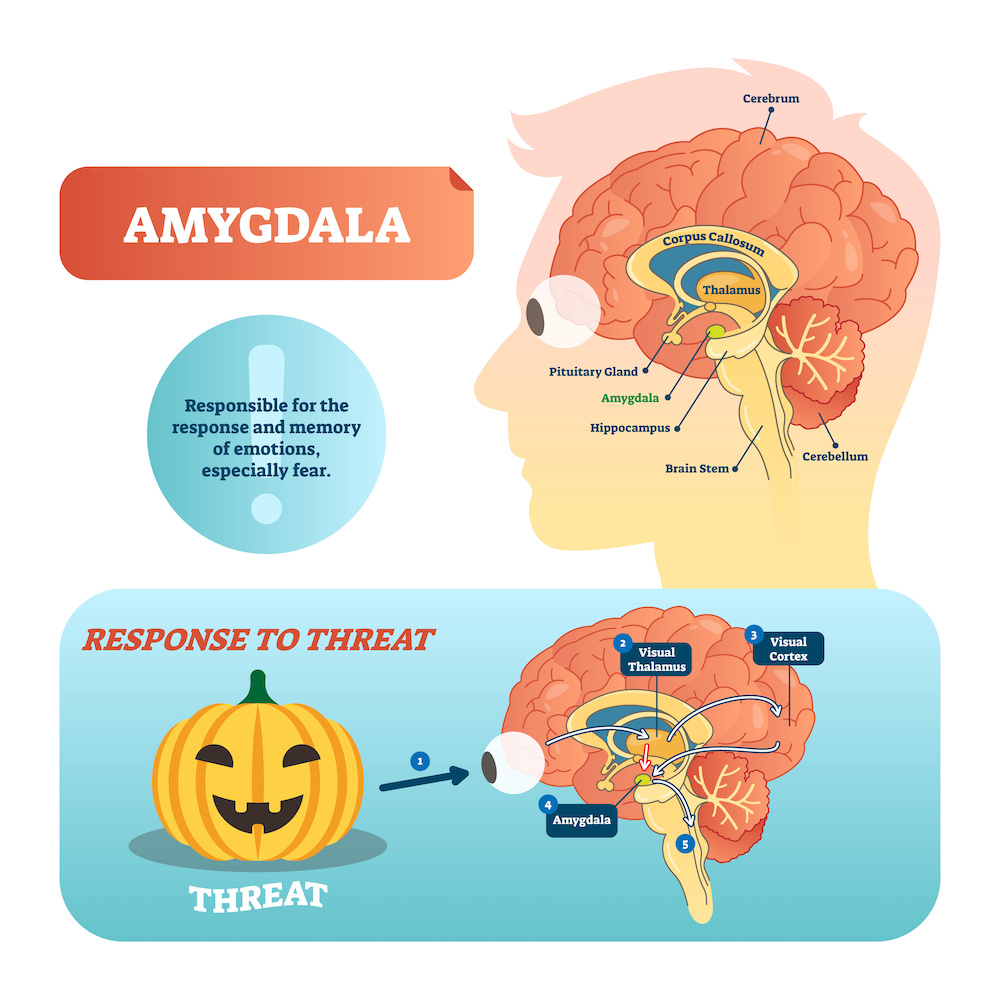
The amygdala and emotional memory. Cartoon shows the visual thalamus, visual cortex, and amygdala response to a threatening pumpkin.
Takeuchi: What exactly is the relationship between emotion and memory? Is it a close relationship?
Johansen: There are different types of memories including conscious memories, which I think you’re referring to here. We know from experience that there is an emotional component to what we consciously remember, right? We experience many things in life, most of which we do not remember. However, when we experience something wonderful, such as the birth of our child, we remember it and it is preserved in our memory for a long time. These memories are conscious memories that we can recall and imagine, including the feelings. Therefore, feelings and emotions shape such memories. This is one aspect of the connection between memory and emotion/affect.
Takeuchi: So, not only good memories, but also sentimental memories and bad experiences are clearly remembered?
Johansen: Yes, exactly. I was attacked by a dog when I was a small child. When I was attacked, my heart raced, my breathing rate increased, I was sweating, all signs of sympathetic nervous system activation. Until this day, whenever I see a threatening dog, the memory of that moment triggers this instinctive physical reaction. This is an example of emotional memory. Emotional memories are a form of unconscious or implicit memory and work in conjunction with or isolated from conscious memory systems. In my laboratory, we study how these emotional memories are formed.
Takeuchi: Why are fearful and painful memories recalled more clearly than pleasant and happy ones?
Johansen: In fact, both types of memory are recalled very well. It’s not clear which type is stronger or more vivid.
Takeuchi: So, you’re saying that as long as the experience is emotional, it’s more deeply ingrained?
Johansen: That’s right, though in very traumatic situations some experience a loss of memory. If you were simply walking down the street on a normal day, you would probably remember very little of what was happening around you. But if you had an experience like being attacked by someone on the street, you might remember more details. The sound of water in the gutter, a red Volkswagen parked on the side of the road. You would probably have a very clear conscious memory of the experience.
Studying traumatic memory in the brain to help treat PTSD
Takeuchi: I believe this is especially true with regard to unpleasant memories, but is it possible to intensionally forget a memory on purpose? I mean, is it possible to control memories by will?
Johansen: It would be really nice if we could do that. In reality, it’s difficult to erase memories completely. However, it is possible to change the emotional component of a memory. One of the ultimate goals of our research is to be able to treat the symptoms of post-traumatic stress disorder, or PTSD, in people who have had traumatic experiences. In cases of long-term PTSD symptoms, the patient may be in a constant state of stress, overreact to things that are related to unpleasant memories, or have strong emotional reactions triggered by sounds or other stimuli unrelated to the trauma. An important goal of our research is to reduce these trauma-derived overreactions.
Takeuchi: I am deeply moved by the fact that your research allows you to work on the goal of “doing work that helps people live better lives,” that you developed through your various jobs and experiences before transferring to university.
Johansen: There is still more work to be done, but I am happy that it is gradually being realized.
Takeuchi: What specific treatments are currently available to ameliorate the difficulties of living with PTSD?
Johansen: One of the most effective treatments is a form of cognitive behavioral therapy called exposure therapy, which re-exposes the person to the environment of the original traumatic experience. This approach attempts to reduce symptoms by reframing the memory of the traumatic event in a safe context. Rather than forgetting the original experience, the original memory is reorganized and its unpleasant emotional aspects are reduced. From the neuroscience side, one way we can help is to provide a better understanding of the brain mechanisms underlying this process and develop pharmaceutical adjuvants which can facilitate this type of therapy.
A video non-scientifically explaining exposure therapy. The National Center for PTSD at the US Department of Veteran Affairs has several videos and tons of information about PTSD.
Takeuchi: So, you’re saying that if we can understand how this process works in the brain, we can develop drugs that act on the steps in the process?
Johansen: Exactly. One of the challenges of the cognitive-behavioral therapies I mentioned is that they do not erase the memory of the bad experience, but only suppress the emotional aspects of it. Sometimes this effect is specific to the safe environment of the doctor’s office. Thus, the memories may return in other situations or over time. If we can understand the brain mechanisms by which memories of traumatic experiences are reduced and augment the effectiveness of these therapies, we may be able to reduce the effects of trauma more effectively and over the longer term. Another very interesting phenomenon we are interested in is called memory reconsolidation, in which memories can be altered when they are recalled.
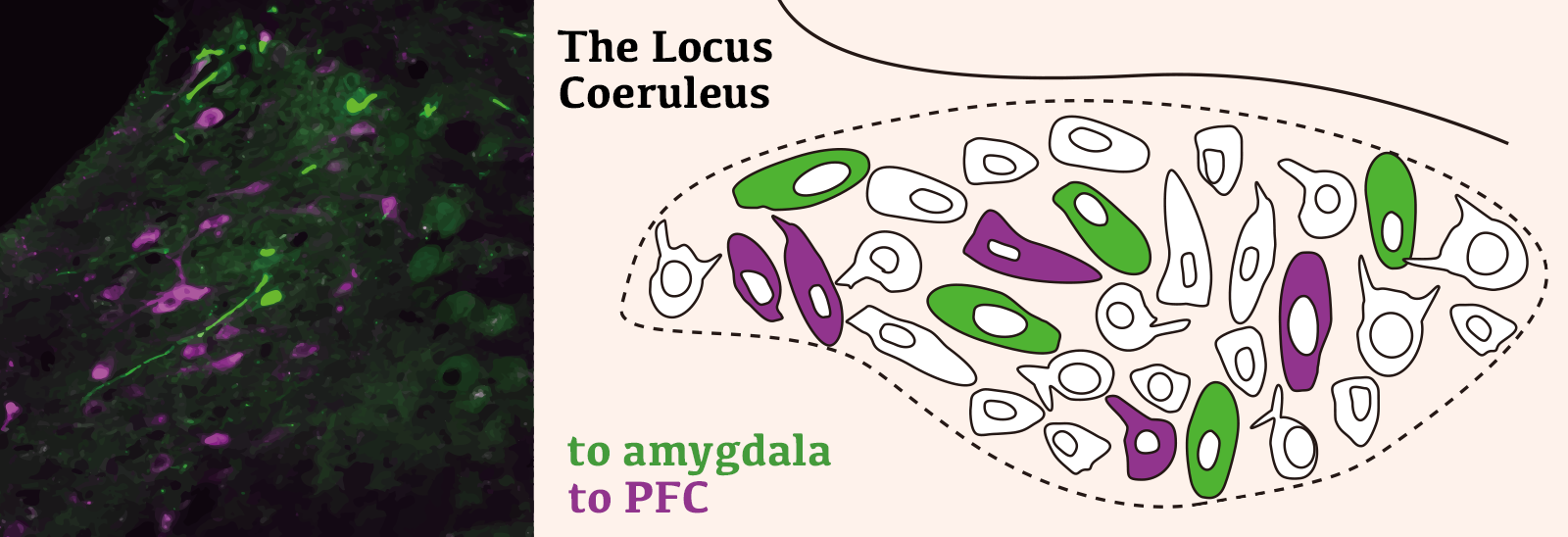
Josh’s lab found two populations of noradregnergic neurons in the locus coeruleus. (left) Coronal section of the locus coeruleus with the different populations of cells labeled with different colored retrograde tracers from the amygdala or medial prefrontal cortex. (right) A schematic. Green-labeled cells projected to the amygdala and were needed for fear learning. Purple-labeled cells projected to the prefrontal cortex (PFC) and were needed for extinction learning. Learn more here: Learning and unlearning to fear: The two faces of noradrenaline
This phenomenon was discovered in the 1960s and 1970s, and at the time, lacked sufficient scientific support. In 2000, however, it was revealed that the act of recalling a memory involves a molecular biological mechanism that is also involved in the storage of the original memory, and it attracted renewed attention. In my lab we’ve figured out that the noradrenergic system in the brainstem is responsible for reconsolidating unpleasant memories. We have identified key molecular mechanisms that noradrenaline is acting on to produce this beneficial effect in the specific cell types which store these memories.
Takeuchi: That’s great!
Johansen: Here is another issue we’re currently working on. We’re wondering if it’s possible to physiologically erase unpleasant memories by blocking the memory reconsolidation mechanism in a cell-type specific way.
Takeuchi: That makes logical sense. The mechanism of memory reintegration sounds very interesting.
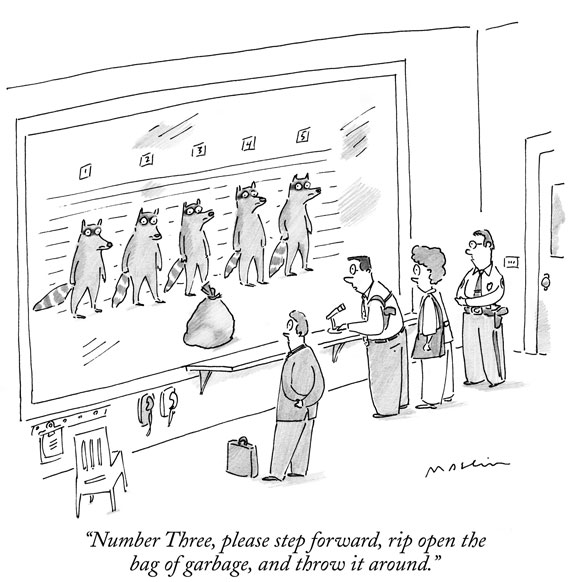
Accounts given by eyewitnesses are considered reliable in court, but should they be when we know how much memories can change with recall? © The New Yorker Collection 2000 Michael Maslin. All Rights Reserved.
Johansen: If we think about memory, even when a group of people experience the same thing, they remember it differently. A good example of this is the famous Akira Kurosawa movie “Rashomon.” In the movie, several people who were at the scene of a crime, such as the samurai’s wife, the notorious bandit Tajomaru, and a witness who saw the whole thing, all gave different testimonies. This is a great example of the malleability of memory.
Takeuchi: Yes, I see what you mean. I think that each of them testifies by re-editing and reintegrating their memories of that time, mixing them with their own feelings. The storytelling technique of depicting the same story from each character’s point of view has been used many times since that movie was made, probably because it’s natural for each individual to have a completely different memory, which is the basis of the series of actions we humans take to see, experience, interpret, and remember the outside world.
Johansen: That’s really an important characteristic of memory. Memory is not absolute, but rather a record of each person’s relative perception of experience. One proposed mechanism for memory reconsolidation is that when we recall a memory, we can incorporate new elements into that memory. Thus, memories can change depending on subsequent experiences, and therefore, the same experience may be a different memory for each person.
Understanding the brain and emotions leads to a true understanding of human beings
Takeuchi: What do you think is the biggest challenge about the brain that you would like to know the answer to through your research?
Johansen: Hmmm. I guess I would like to be able to use animal research to understand the complex forms of emotion that are present in the human brain. To put it more technically, I would like to understand how higher-level emotional representations are formed in the cerebral cortex and how these cortical systems interact with more evolutionarily conserved subcortical systems which produce the behavioral and bodily expressions of emotion. Until now, research in animal models has focused on simple emotional responses, such as fear. The next frontier is understanding complex, more evaluative emotions and their underlying brain mechanisms.
Takeuchi: So, ultimately, you are trying to figure out how complex emotions are integrated into memory in the human brain, and you want to create animal models that allow you do to this?
Johansen: It’s ambitious, but this is what we must aim for. Emotions are also created by the way we humans interpret the world, an aspect that can be considered both psychologically and biologically. I believe that understanding these mechanisms from a neuroscientific perspective is the first step toward expanding treatment options for patients suffering from trauma and anxiety disorders and making their lives easier. Besides, thinking about emotions is fascinating. It’s wonderful to learn about the brain systems that produce our rich emotional life. Most of our life experiences involve emotions, don’t they? If we can understand those processes, we can truly understand who we are as human beings. I believe this is the area that most fascinates me as a researcher.
Doing good science and being a good researcher
Takeuchi: Are you enjoying your life in Japan after moving from the US?
Johansen: Overall, yes. I like it very much and am enjoying my life in Japan. My life has been fairly nomadic and, as we discussed, even before I started working as a researcher in earnest, I was traveling and moving quite a bit. Actually, this is the longest period of time I’ve lived in one place and it’s given me the opportunity to make a home here. I have made many friends through work and even outside of work through my love for cycling and through my children’s schools.
Takeuchi: So, you’ve finally established a base for living and research?
Johansen: Yes, indeed. Something I feel strongly about is that science is a global pursuit. Science progresses through a global discussion and refinement over time. To make an impact requires engaging with the international scientific community. If your findings are important, it’s only through this global engagement that they can be promulgated and have an impact on the world. I believe this is the way science is born and developed. If these discussions disappear, science will regress. This was a danger during the coronavirus pandemic. Before the pandemic, it was commonplace for researchers to meet and discuss their work with colleagues from all over the globe, and these difficult years have made me deeply aware of the importance of these types of interactions. I’m happy to see the world reopening now and I am enjoying reconnecting with everyone and beginning the conversation again.
Takeuchi: What is your idea of a good researcher?
Johansen: I could list many points, but I think it’s a combination of qualities. Rigor and honesty coupled with original thinking and creativity. A good researcher must be able to look past the details of individual experiments and the easy next steps and see beyond what we know now and into new areas that are fresh and waiting to be explored. They need to be great storytellers and communicators. To have the ability to interpret new findings and understand their importance and to be the first to see the significance of emerging data that point us in new directions. It may sound a bit contradictory, but a great researcher must have a combination of these characteristics, attention to detail and a vast, free imagination.
Takeuchi: To enhance these qualities, what is the most important thing? Is it the freedom to do curiosity driven research, budget, or the right equipment? What is the most important?
Johansen: I think all of the above. Aside from that, I think a little stress helps. (laughs) Of course, nobody like stress, but, for example, when applying for research grants, submitting papers to publishers, or giving talks at conferences, it’s actually helpful to be put in a situation where you have to undergo peer review and receive harsh feedback. If you are too complacent, if you are not pushed to achieve at a high level and there are no consequences for that, your work will suffer. The struggle pushes you to grow, and in a strange way, you start to appreciate that.
Takeuchi: Josh, you are still a young research team leader, what advice would you give to young people interested in a career as a researcher?

Many think that taking time to live in different places and work in different jobs is a good idea. It’s also a good idea to have interested and hobbies unrelated to your field of study. It helps to prevent burn-out.
Johansen: This advice is based on my own experience and there are many ways to achieve success and fulfillment, but I think you should make time to think and experience the world, and don’t rush into things. Take some time off from what you are currently doing and try different jobs. If you want to make research your profession, you should volunteer at a lab in high school or college and experience it first-hand. You must have a strong passion and motivation for science. Without that, no matter how smart you are, you will not succeed. Furthermore, balance is good. Having hobbies and recreational activities outside of research is also important. This helps you not take yourself too seriously and aids in resilience, and can also help to indirectly improve your science and enhance creativity.
Takeuchi: Are the varied experiences that you mentioned something that will help you someday as a researcher when you hit some major wall or something?
Johansen: Definitely! The more varied your experiences and skills, the more confident you will be in your judgment. By gaining many experiences and being involved with many different types of people, you will be exposed to different values and ways of thinking. You’ll be able to visualize your life following different paths. This will give you confidence in your own judgment when you finally decide on your true path.
(You can read part 2 in Japanese here)
From pain to emotional memory
Takeuchi: Your current research is on emotions and memory. How did you come to shift your research focus from studying pain?
Johansen: Actually, it wasn’t much of a shift. I began studying emotional memory because it was an extension of my initial pain research on trying to understand how unpleasant or aversive experiences change behavior. The study of emotion had identified a specific brain region called the amygdala, which is important for storing emotional memories. For example, imagine you hear the sound of twigs breaking in the woods before a bear comes charging at you. If you subsequently hear a rustling in the underbrush on your next hike you will have an emotional memory that mobilizes survival mechanisms such as increased heart rate and blood pressure and defensive behaviors like flight or fight. This type of associative emotional memory is also produced when we have painful experiences. So I could take my initial questions on how pain leads to learning and changes in behavior and study them in a brain region, the amygdala, which I knew stored these types of memories. I could try to figure out how the primary aversive experience, pain from the attack of a wild animal for example, triggers biological changes in the amygdala to produce emotional memories.

The amygdala and emotional memory. Cartoon shows the visual thalamus, visual cortex, and amygdala response to a threatening pumpkin.
Takeuchi: What exactly is the relationship between emotion and memory? Is it a close relationship?
Johansen: There are different types of memories including conscious memories, which I think you’re referring to here. We know from experience that there is an emotional component to what we consciously remember, right? We experience many things in life, most of which we do not remember. However, when we experience something wonderful, such as the birth of our child, we remember it and it is preserved in our memory for a long time. These memories are conscious memories that we can recall and imagine, including the feelings. Therefore, feelings and emotions shape such memories. This is one aspect of the connection between memory and emotion/affect.
Takeuchi: So, not only good memories, but also sentimental memories and bad experiences are clearly remembered?
Johansen: Yes, exactly. I was attacked by a dog when I was a small child. When I was attacked, my heart raced, my breathing rate increased, I was sweating, all signs of sympathetic nervous system activation. Until this day, whenever I see a threatening dog, the memory of that moment triggers this instinctive physical reaction. This is an example of emotional memory. Emotional memories are a form of unconscious or implicit memory and work in conjunction with or isolated from conscious memory systems. In my laboratory, we study how these emotional memories are formed.
Takeuchi: Why are fearful and painful memories recalled more clearly than pleasant and happy ones?
Johansen: In fact, both types of memory are recalled very well. It’s not clear which type is stronger or more vivid.
Takeuchi: So, you’re saying that as long as the experience is emotional, it’s more deeply ingrained?
Johansen: That’s right, though in very traumatic situations some experience a loss of memory. If you were simply walking down the street on a normal day, you would probably remember very little of what was happening around you. But if you had an experience like being attacked by someone on the street, you might remember more details. The sound of water in the gutter, a red Volkswagen parked on the side of the road. You would probably have a very clear conscious memory of the experience.
Studying traumatic memory in the brain to help treat PTSD
Takeuchi: I believe this is especially true with regard to unpleasant memories, but is it possible to intensionally forget a memory on purpose? I mean, is it possible to control memories by will?
Johansen: It would be really nice if we could do that. In reality, it’s difficult to erase memories completely. However, it is possible to change the emotional component of a memory. One of the ultimate goals of our research is to be able to treat the symptoms of post-traumatic stress disorder, or PTSD, in people who have had traumatic experiences. In cases of long-term PTSD symptoms, the patient may be in a constant state of stress, overreact to things that are related to unpleasant memories, or have strong emotional reactions triggered by sounds or other stimuli unrelated to the trauma. An important goal of our research is to reduce these trauma-derived overreactions.
Takeuchi: I am deeply moved by the fact that your research allows you to work on the goal of “doing work that helps people live better lives,” that you developed through your various jobs and experiences before transferring to university.
Johansen: There is still more work to be done, but I am happy that it is gradually being realized.
Takeuchi: What specific treatments are currently available to ameliorate the difficulties of living with PTSD?
Johansen: One of the most effective treatments is a form of cognitive behavioral therapy called exposure therapy, which re-exposes the person to the environment of the original traumatic experience. This approach attempts to reduce symptoms by reframing the memory of the traumatic event in a safe context. Rather than forgetting the original experience, the original memory is reorganized and its unpleasant emotional aspects are reduced. From the neuroscience side, one way we can help is to provide a better understanding of the brain mechanisms underlying this process and develop pharmaceutical adjuvants which can facilitate this type of therapy.
A video non-scientifically explaining exposure therapy. The National Center for PTSD at the US Department of Veteran Affairs has several videos and tons of information about PTSD.
Takeuchi: So, you’re saying that if we can understand how this process works in the brain, we can develop drugs that act on the steps in the process?
Johansen: Exactly. One of the challenges of the cognitive-behavioral therapies I mentioned is that they do not erase the memory of the bad experience, but only suppress the emotional aspects of it. Sometimes this effect is specific to the safe environment of the doctor’s office. Thus, the memories may return in other situations or over time. If we can understand the brain mechanisms by which memories of traumatic experiences are reduced and augment the effectiveness of these therapies, we may be able to reduce the effects of trauma more effectively and over the longer term. Another very interesting phenomenon we are interested in is called memory reconsolidation, in which memories can be altered when they are recalled.

Josh’s lab found two populations of noradregnergic neurons in the locus coeruleus. (left) Coronal section of the locus coeruleus with the different populations of cells labeled with different colored retrograde tracers from the amygdala or medial prefrontal cortex. (right) A schematic. Green-labeled cells projected to the amygdala and were needed for fear learning. Purple-labeled cells projected to the prefrontal cortex (PFC) and were needed for extinction learning. Learn more here: Learning and unlearning to fear: The two faces of noradrenaline
This phenomenon was discovered in the 1960s and 1970s, and at the time, lacked sufficient scientific support. In 2000, however, it was revealed that the act of recalling a memory involves a molecular biological mechanism that is also involved in the storage of the original memory, and it attracted renewed attention. In my lab we’ve figured out that the noradrenergic system in the brainstem is responsible for reconsolidating unpleasant memories. We have identified key molecular mechanisms that noradrenaline is acting on to produce this beneficial effect in the specific cell types which store these memories.
Takeuchi: That’s great!
Johansen: Here is another issue we’re currently working on. We’re wondering if it’s possible to physiologically erase unpleasant memories by blocking the memory reconsolidation mechanism in a cell-type specific way.
Takeuchi: That makes logical sense. The mechanism of memory reintegration sounds very interesting.
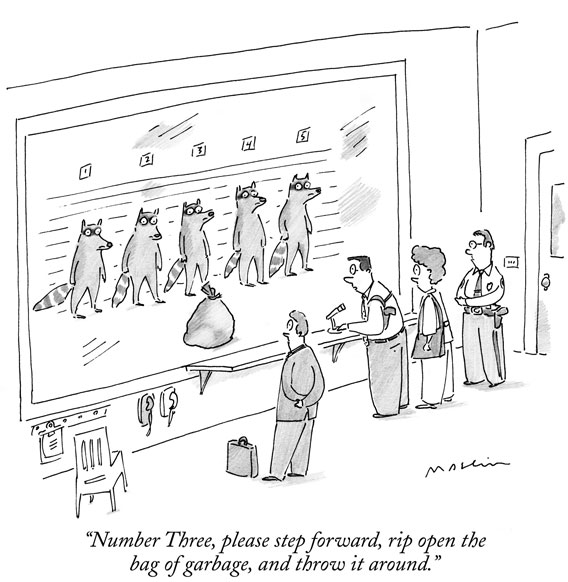
Accounts given by eyewitnesses are considered reliable in court, but should they be when we know how much memories can change with recall? © The New Yorker Collection 2000 Michael Maslin. All Rights Reserved.
Johansen: If we think about memory, even when a group of people experience the same thing, they remember it differently. A good example of this is the famous Akira Kurosawa movie “Rashomon.” In the movie, several people who were at the scene of a crime, such as the samurai’s wife, the notorious bandit Tajomaru, and a witness who saw the whole thing, all gave different testimonies. This is a great example of the malleability of memory.
Takeuchi: Yes, I see what you mean. I think that each of them testifies by re-editing and reintegrating their memories of that time, mixing them with their own feelings. The storytelling technique of depicting the same story from each character’s point of view has been used many times since that movie was made, probably because it’s natural for each individual to have a completely different memory, which is the basis of the series of actions we humans take to see, experience, interpret, and remember the outside world.
Johansen: That’s really an important characteristic of memory. Memory is not absolute, but rather a record of each person’s relative perception of experience. One proposed mechanism for memory reconsolidation is that when we recall a memory, we can incorporate new elements into that memory. Thus, memories can change depending on subsequent experiences, and therefore, the same experience may be a different memory for each person.
Understanding the brain and emotions leads to a true understanding of human beings
Takeuchi: What do you think is the biggest challenge about the brain that you would like to know the answer to through your research?
Johansen: Hmmm. I guess I would like to be able to use animal research to understand the complex forms of emotion that are present in the human brain. To put it more technically, I would like to understand how higher-level emotional representations are formed in the cerebral cortex and how these cortical systems interact with more evolutionarily conserved subcortical systems which produce the behavioral and bodily expressions of emotion. Until now, research in animal models has focused on simple emotional responses, such as fear. The next frontier is understanding complex, more evaluative emotions and their underlying brain mechanisms.
Takeuchi: So, ultimately, you are trying to figure out how complex emotions are integrated into memory in the human brain, and you want to create animal models that allow you do to this?
Johansen: It’s ambitious, but this is what we must aim for. Emotions are also created by the way we humans interpret the world, an aspect that can be considered both psychologically and biologically. I believe that understanding these mechanisms from a neuroscientific perspective is the first step toward expanding treatment options for patients suffering from trauma and anxiety disorders and making their lives easier. Besides, thinking about emotions is fascinating. It’s wonderful to learn about the brain systems that produce our rich emotional life. Most of our life experiences involve emotions, don’t they? If we can understand those processes, we can truly understand who we are as human beings. I believe this is the area that most fascinates me as a researcher.
Doing good science and being a good researcher
Takeuchi: Are you enjoying your life in Japan after moving from the US?
Johansen: Overall, yes. I like it very much and am enjoying my life in Japan. My life has been fairly nomadic and, as we discussed, even before I started working as a researcher in earnest, I was traveling and moving quite a bit. Actually, this is the longest period of time I’ve lived in one place and it’s given me the opportunity to make a home here. I have made many friends through work and even outside of work through my love for cycling and through my children’s schools.
Takeuchi: So, you’ve finally established a base for living and research?
Johansen: Yes, indeed. Something I feel strongly about is that science is a global pursuit. Science progresses through a global discussion and refinement over time. To make an impact requires engaging with the international scientific community. If your findings are important, it’s only through this global engagement that they can be promulgated and have an impact on the world. I believe this is the way science is born and developed. If these discussions disappear, science will regress. This was a danger during the coronavirus pandemic. Before the pandemic, it was commonplace for researchers to meet and discuss their work with colleagues from all over the globe, and these difficult years have made me deeply aware of the importance of these types of interactions. I’m happy to see the world reopening now and I am enjoying reconnecting with everyone and beginning the conversation again.
Takeuchi: What is your idea of a good researcher?
Johansen: I could list many points, but I think it’s a combination of qualities. Rigor and honesty coupled with original thinking and creativity. A good researcher must be able to look past the details of individual experiments and the easy next steps and see beyond what we know now and into new areas that are fresh and waiting to be explored. They need to be great storytellers and communicators. To have the ability to interpret new findings and understand their importance and to be the first to see the significance of emerging data that point us in new directions. It may sound a bit contradictory, but a great researcher must have a combination of these characteristics, attention to detail and a vast, free imagination.
Takeuchi: To enhance these qualities, what is the most important thing? Is it the freedom to do curiosity driven research, budget, or the right equipment? What is the most important?
Johansen: I think all of the above. Aside from that, I think a little stress helps. (laughs) Of course, nobody like stress, but, for example, when applying for research grants, submitting papers to publishers, or giving talks at conferences, it’s actually helpful to be put in a situation where you have to undergo peer review and receive harsh feedback. If you are too complacent, if you are not pushed to achieve at a high level and there are no consequences for that, your work will suffer. The struggle pushes you to grow, and in a strange way, you start to appreciate that.
Takeuchi: Josh, you are still a young research team leader, what advice would you give to young people interested in a career as a researcher?

Many think that taking time to live in different places and work in different jobs is a good idea. It’s also a good idea to have interested and hobbies unrelated to your field of study. It helps to prevent burn-out.
Johansen: This advice is based on my own experience and there are many ways to achieve success and fulfillment, but I think you should make time to think and experience the world, and don’t rush into things. Take some time off from what you are currently doing and try different jobs. If you want to make research your profession, you should volunteer at a lab in high school or college and experience it first-hand. You must have a strong passion and motivation for science. Without that, no matter how smart you are, you will not succeed. Furthermore, balance is good. Having hobbies and recreational activities outside of research is also important. This helps you not take yourself too seriously and aids in resilience, and can also help to indirectly improve your science and enhance creativity.
Takeuchi: Are the varied experiences that you mentioned something that will help you someday as a researcher when you hit some major wall or something?
Johansen: Definitely! The more varied your experiences and skills, the more confident you will be in your judgment. By gaining many experiences and being involved with many different types of people, you will be exposed to different values and ways of thinking. You’ll be able to visualize your life following different paths. This will give you confidence in your own judgment when you finally decide on your true path.
(You can read part 2 in Japanese here)


